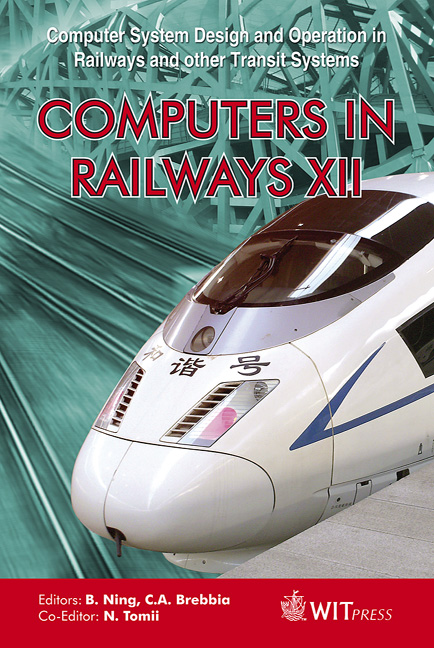A Simulation Analysis Of Train Rescheduling Strategies On Chinese Passenger Dedicated Lines
Price
Free (open access)
Transaction
Volume
114
Pages
10
Page Range
953 - 962
Published
2010
Size
332 kb
Paper DOI
10.2495/CR100861
Copyright
WIT Press
Author(s)
Z. He, L. Meng, H. Li & L. Nie
Abstract
Train rescheduling plays a vital role in railway operation. Many factors should be considered in the train rescheduling process and train class, delayed time, remaining distance and current position are the most common ones. There are usually different measures aiming at corresponding factors and combinations of the measures with different priorities compose various train rescheduling strategies. Furthermore, different strategies lead diverse results and they are applicable to various scenarios respectively. This paper researched the effects of different train rescheduling strategies in the background of Wuguang passenger dedicated line by means of simulation experiments. It analyzed class-based strategies first and achieved the suitable strategy and its related parameters. Then it analyzed the influence of different combinations of high-speed strategies and middle-speed strategies under different perturbation scenarios. Keywords: train rescheduling strategy; passenger dedicated line; simulation. 1 Introduction Train rescheduling is the key work in railway operation. Its basic idea is to determine a new order of the trains when some perturbations make current schedule disordered and infeasible. Many factors should be considered together and corresponding measures will be taken in this process. The measures and their various combinations compose different train rescheduling strategies which will probably lead diverse results and are applicable to various scenarios respectively. Because of high density and high speed of trains, train rescheduling work in Chinese Passenger Dedicated Lines (PDL) is more difficult than that in
Keywords
train rescheduling strategy; passenger dedicated line; simulation





